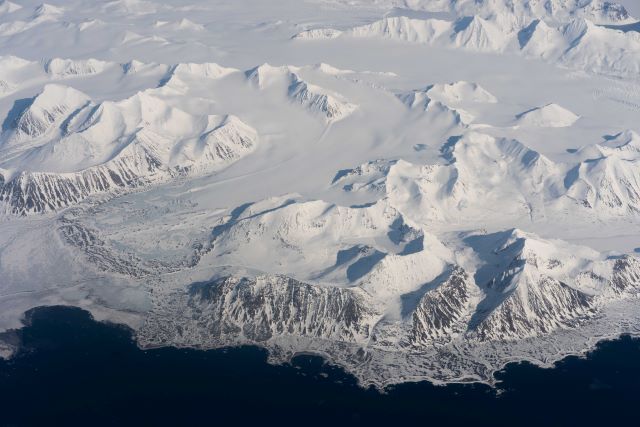
Glacier-covered landscapes in the high Arctic
A new study published in Nature Communications reveals that dark-pigmented microalgae, which contribute to the melting of the Greenland Ice Sheet, are highly efficient at nutrient uptake and growth, allowing them to rapidly colonise expanding areas of exposed ice. The findings suggest that these algae can persist and spread without the need for additional nutrient inputs, intensifying ice sheet darkening and accelerating melt rates.
The research, authored by Dr James Bradley, Honorary Reader in Arctic Biogeochemistry in the School of Biological and Behavioural Sciences at Queen Mary University of London, and his European colleagues, used cutting-edge single-cell imaging techniques to examine the carbon, nitrogen, and phosphorus content of glacier ice algae. By measuring their nutrient assimilation rates, the study found that these algae store phosphorus internally and maintain exceptionally high carbon-to-nutrient ratios, indicating a survival strategy finely tuned to nutrient-poor glacier environments.

"Crucial insights" into how ice algae survive
"Our study provides crucial insights into how glacier ice algae sustain themselves in such extreme conditions," said Dr Bradley. "They don't require large amounts of external nutrients to grow, which means that as the ice sheet continues to melt and expose more bare ice, these algae are well-positioned to expand their coverage. This is particularly concerning because their dark pigmentation lowers the ice's reflectivity, increasing heat absorption and accelerating melting and therefore sea-level rise."
Findings will help us predict sea-level rise
The melting of the Greenland Ice Sheet is the single largest contributor of freshwater to global sea-level rise. Previous research has shown that algal blooms on the ice sheet's western margin can enhance melt rates by 10 to 13%. However, the factors controlling algal growth have remained unclear. This new study highlights how these resilient microorganisms can optimise their nutrient intake, ensuring their survival and expansion despite the nutrient-poor conditions of the ice sheet.
Dr Bradley added: "Understanding these algal blooms is critical for predicting future ice sheet behaviour and sea level rise. Our results suggest that as climate warming continues and melt zones expand, we are likely to see a self-sustaining cycle where more algae lead to more melting, which in turn creates a larger habitat for algae. This feedback loop could have significant implications for the future of the Greenland Ice Sheet and global sea level rise."
Working together to improve climate models
By revealing the self-sufficiency of these algae, the study underscores the urgent need to incorporate biological processes into climate models predicting ice sheet melt. The findings highlight the complexity of interactions between microbial life and glacial melt, reinforcing the need for continued research into the biological drivers of ice sheet darkening.
This research was a collaborative effort involving scientists from numerous institutions and was funded by the European Research Council as part of the Deep Purple project. The study was led by Dr. Laura Halbach (Max Planck Institute for Marine Microbiology, Bremen) and involved scientists from across Europe including Denmark's Aarhus University and Technical University of Denmark; France's Mediterranean Institute of Oceanography and CNRS; Austria's University of Vienna; Germany's Max Planck Institute for Marine Microbiology, GFZ German Research Centre for Geosciences, and Freie Universität Berlin; Sweden's Swedish Museum of Natural History and Swedish University of Agricultural Sciences; and the UK's Queen Mary University of London.






